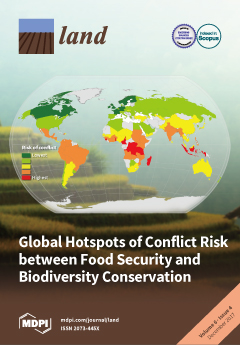Resources
Displaying 1941 - 1945 of 2258Collaborative Research on the Ecology and Management of the ‘Wulo’ Monsoon Rainforest in Wunambal Gaambera Country, North Kimberley, Australia
Indigenous groups are increasingly combining traditional ecological knowledge and Western scientific approaches to inform the management of their lands. We report the outcomes of a collaborative research project focused on key ecological questions associated with monsoon vine thickets in Wunambal Gaambera country (Kimberley region, Western Australia). The study mapped monsoon rainforests and analysed the environmental correlates of their current distribution, as well as the historical drivers of patch dynamics since 1949.
Landscape Risk Assessment Model and Decision Support System for the Protection of the Natural and Cultural Heritage in the Eastern Mediterranean Area
In recent years, the competition of uses for scarce and highly valuable natural resources, and the frequency and severity of natural and technological disasters have increased, and this trend is likely to worsen in the years to come. In the Mediterranean area, especially in its Eastern part, the high human exploitation driven by different economic sectors and interests is resulting in intensive use of the land and its resources.
Land Cover Change in Northern Botswana: The Influence of Climate, Fire, and Elephants on Semi-Arid Savanna Woodlands
Complex couplings and feedback among climate, fire, and herbivory drive short- and long-term patterns of land cover change (LCC) in savanna ecosystems. However, understanding of spatial and temporal LCC patterns in these environments is limited, particularly for semi-arid regions transitional between arid and more mesic climates.
Impact of Soil Depth and Topography on the Effectiveness of Conservation Practices on Discharge and Soil Loss in the Ethiopian Highlands
Restoration of degraded landscapes through the implementation of soil and water conservation practices is considered a viable option to increase agricultural production by enhancing ecosystems. However, in the humid Ethiopian highlands, little information is available on the impact of conservation practices despite wide scale implementation. The objective of this research was to document the effect of conservation practices on discharge and sediment concentration and load in watersheds that have different soil depths and topography.
Determining the Frequency of Dry Lake Bed Formation in Semi-Arid Mongolia From Satellite Data
In the Mongolian Plateau, the desert steppe, mountains, and dry lake bed surfaces may affect the process of dust storm emissions. Among these three surface types, dry lake beds are considered to contribute a substantial amount of global dust emissions and to be responsible for “hot spots” of dust outbreaks. The land cover types in the study area were broadly divided into three types, namely desert steppe, mountains, and dry lake beds, by a classification based on Normalized Difference Water Index (NDWI) calculated from MODIS Terra satellite images, and Digital Elevation Model (DEM).


